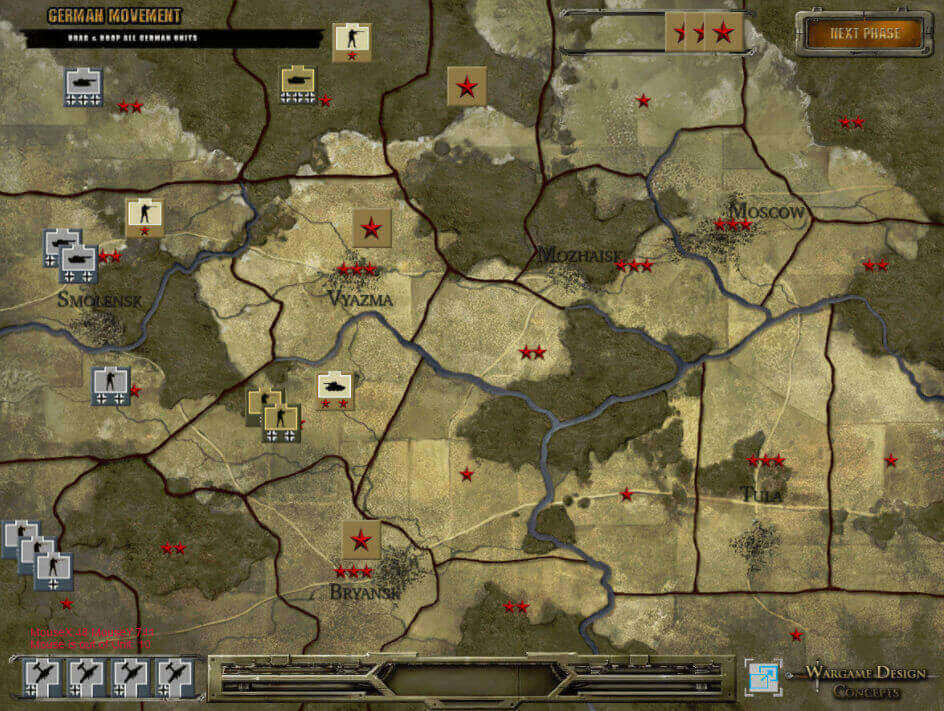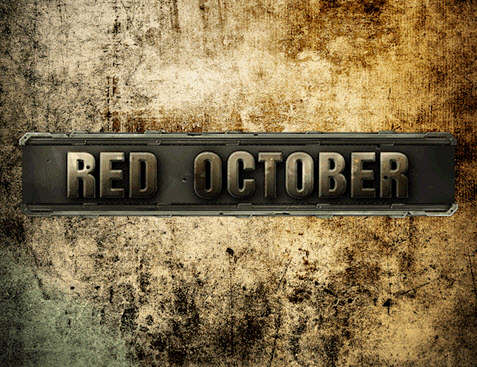An Ongoing Conversion Project - Phaser 3 to Defold
My initial game development project was a pocket wargame that I titled: Red October - March on Moscow. This game is focused on actions by both German and Soviet forces on the Eastern Front during World War II. From a gaming perspective, the project focused on: (a) conforming with industry-standard game setup, both in terms of duration of play and game mechanics, (b) integrating both heuristic and state-machine related optimization and artificial intelligence routines to facilitate solitaire play, and (c) the incorporation of high resolution graphics.
The original project was developed using the Phaser game engine, because at that time, I was only really looking to develop a web application. My experience in combining Phaser with Apache Cordova was twofold: (1) this technique does result in an end product that successfully executes in both the android and iOS environments, but (2) I found that I wasn't getting the performance I needed. As a result, I am presently converting the entire project to leverage the strengths associated with the Defold Game Engine.

Red October is a classic introductory area-based wargame, focused on the Eastern Front during World War II - the German High Command's Campaign to capture Moscow. My design criteria was to focus on the essentials: (a) conforming with industry-standards related to pocket/micro-wargaming: setup, duration of play, constrained unit count, game mechanics and victory conditions, (b) integrating both heuristic and state-machine related optimization routines to provide challenging solitaire play, without hampering playability, and (c) incorporating high resolution, stunning graphics for both mapsheet and unit counters.
- TURN BASED, AREA CENTRIC. Red October starts with an initial setup phase; then, each turn consists of three operational phases: Ground Unit Movement, Air Strike Targeting, and Combat Engagement.
- AI-DRIVEN SOVIET ACTIONS. Game Artificial Intelligence routines control Soviet Unit movement to defensive positions across the mapsheet. Characteristics of untested Soviet Units are hidden from view until a German Unit moves adjacent to it.
- DRAG/DROP BASED MOVEMENT. Using either a mouse or touchscreen, during the movement phase, the user can move German Units using intuitive drag & drop – subject to game imposed movement constraints due to movement points and terrain features.
- GROUND/AVIATION UNITS. German ground units include both infantry and armor capabilities. Unit sprites (counters) display both the unit type as well as the current unit strength via dynamic icons, which can change based on combat results. Additionally, the game models German air sorties, limited by logistic/weather conditions.
- STRENGTH-RATIO BASED CRT. Red October’s game engine integrates a Combat Results Table (CRT) which determines the impact of combat based on relative strength ratios between German and Soviet forces occupying the same area – the specific result (Strength Point Loss or Unit Elimination) driven by a random (stochastic) factor being introduced by a computer driven dice roll.
Go Ahead -- play Red October - March on Moscow
Click on the image to the left to open the game, which will include the "How to Play" instructions for this Early Pre-Release Version of the Game.
I am developing a Defold version of this game, to demonstrate Defold's strengths on a HTML5 platform.
Wargame Design Concepts
Wargame Design Concepts is an affiliated website to this TactxStudios site. The WDC site is more focused on the conduct of historical research, game design, software development and release of easy-to-play, solitaire wargames – built for both browsers and tablets. My goal is to provide free-to-play games with no intrusive ads, nor annoying in-game purchases -- and to share my experiences in using current game engine technologies.


